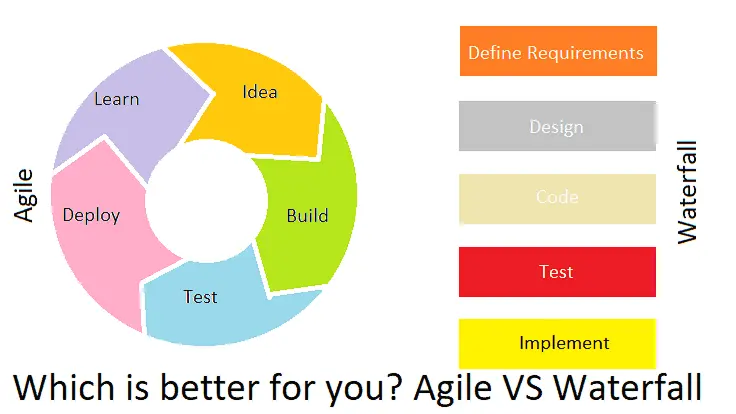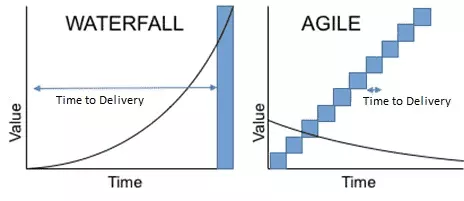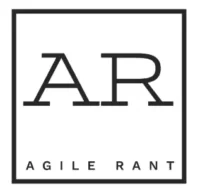
For those new to Agile, or those just wanting to know more about it. What is Agile exactly? Why is it all the rage? How does it help you to do the things you need to do, and better than other practices?
First, I am a fan of Agile. A proponent of what it can do, by how it helps you to do work. With that in mind, I believe Agile, as a way of approaching complex problems, extends far beyond software and product development. But for purposes here, my references are mainly around Agile software and product development.
Applicable to many types of work, but especially so with software work, is the fact that often the way to solve problems, the “how” of the work is not fully understood before doing the work. Which, if you don’t know how to go about solving a problem or meeting a need, there are many things that are not known about the work. Like, when will it be completed, what resources will it require, how much will it cost, and many more.
In today’s fast-moving and ever-changing business and technology landscapes, not knowing answers to these questions can present major challenges. But that is where the Agile methodology comes in. It can help solve and get past many of these questions.
Read on to learn what is Agile and how it can benefit your team. Especially helping to deliver more quickly, and to deliver more value.
What is Agile?
Agile is a series of ideas and practices that helps promote collaboration and communication on teams. Enabling their work together. Helping the team to organize around the goals of the work. Keeping values in mind to build incrementally and iteratively. As well as promoting good feedback with those that use the software products. To learn and adapt, to really meet user needs.
Agile is a way of working, that helps approach complex and unknown work items. It embraces the unknown by leveraging adaptability and flexibility, keeping them baked into the process.
The Agile approach is an iterative approach. Where the development team works on smaller pieces of work, and adds to it over time with learning as they go. Involving customer collaboration to adjust and build the best thing they can.
Agile Project Management is all about working as a team, to discover and work thru the complex work items the team has. All to best deliver value from the work. These ideas are detailed further in the Agile Manifesto, in its detailed values and principles. These are important for day-to-day use, but I’m not going to get into them here.
Agile helps teams to understand the work. Limiting work in progress, to focus on top priority, and go deliver value regularly. Agile leverages shorter timelines to shorten feedback loops. This enables learning and reduces misunderstandings. What is Agile, it also is the empowerment of the team to do the work.
Agile Project Management enables teams to go and deliver the right work, not the planned work.
Agile VS Waterfall. An iterative process that can refine and build better. Or an assembly line process that is more defined and structured.

Agile improves development team communication. Its about interactions over processes. Guiding the development team in how they change and how they go about their work. All to improve the team, which includes how the team feels about their work. Ultimately helping to build the right things and satisfy the customer.
What is Agile, it is also a way to fail fast! Letting teams learn quickly so they can continue and build the right things.
So, how does that apply?
Agile methodology is a way of approaching complex problems. Working as a team, while promoting good communication and collaboration practices. Promoting an understanding of the needs behind the work. Keep things flexible so that you can change as needed, to best meet the needs.
So all those things said, Agile methodology is a way of tackling work. Emphasizing the learn and adapt mentality, combined with good teamwork practices. Leveraging those concepts to promote good delivery of value. As any software development project needs to deliver value to be successful.
Agile is an alternative born from needing more flexibility
Agile is an alternative approach to more traditional project management and software development practices. Leveraging an iterative and incremental approach to building out software and software products. It was created in response to issues with past methods, where value was not delivered, cost and time frames were spiraling out of control, and user feedback was not being included in a timely manner.
If looking for a definition of Agile, you could summarize Agile as being an approach to project management and work that favors small work increments with increased feedback and measuring of success, to enable learning and course correction to the work.
The intent is for teams to tackle work in smaller batches, but continually work and deliver, then adjust and continue the process. The Agile method was created to keep the user in mind and always work towards meeting the goals of the user and build value.
Agile leverages smaller and specific time increments, to build software in smaller pieces. Ideally, in sequential priority order. But delivering iteratively over time. Comparatively, where Waterfall projects try to deliver the entire project all at once, but take a tremendous amount of time to get there.
Agile typically works by breaking down larger efforts into smaller pieces of work, often user stories. These stories are prioritized to provide value and impact. And the Agile team works thru them in the prioritized order. Delivering an amount of these user stories in their decided timeline, the sprint.
So what is Agile then? It includes the idea that you break work down and tackle it piece by piece. To deliver value and reach goals continuously, over time. But building value at each completed iteration of work.
How good are Agile methods?
Agile methods are good because they reduce risk. They reduce the risk of building the wrong thing, of error and bugs. Agile methods reduce the risk of wasting time, energy, and money on work that simply doesn’t work for the goals of the user.
They do this by building in smaller increments, regularly testing, and getting feedback to allow for course correction. Having the iteration built-in allows for Agile teams to build and learn. Getting them to the best results more accurately and more quickly.
Benefits of Agile Methodology
If asking yourself what is Agile, some of the benefits seen may help to differentiate from more traditional practices. Below are some of the key benefits.
Faster delivery of value
By building in smaller pieces of work and delivering more frequently, you can get value much more quickly. In Agile development, typically time frames between deployments are smaller. To enable this, of course, the amount of work done in each time frame is smaller. But, if following a good Agile process and arranging work by priority, the top priority items will deliver more value. Thus you will be able to deliver the items that get the most value sooner.

Addresses the unknowns by allowing teams to learn
The Agile development process embraces the uncertainty and unknowns of the work. Instead of trying to force teams to know everything up front, Agile practices allow for learning and especially the ability to adapt along the way. Building in this ability to learn and adapt allows teams to build the best products and value possible.
Building in the flexibility and allowing teams to learn, which allows them to do the best job they can, is what Agile is all about.
Collaboration and engagement with those involved
The Agile model promotes collaboration and communication amongst all of those involved. Not just the immediate team, but the stakeholders, users, and all involved with the work. This helps build a better product but also helps do so in a way that is more transparent. Not to mention helping all feel more engaged and content with the work process by being kept involved.
Collaboration over contract negotiation is one of the 4 basic values of Agile Project Management. Because customer satisfaction is how you achieve success.
Flexibility and adaptability for change
Agile methodology embraces the flexibility and adaptability needed to be able to respond to changing needs. This allows the team to make changes to best meet their user and stakeholder needs.
As opposed to continuing on with work that won’t deliver the best value, to embrace the change needed so that the team can deliver the best value. Part of this is the ability of the team to move and organize work differently, to meet these changing needs.
After all, what is Agile if not an ability to adapt to changing needs and circumstances. That is a primary concept in its values and principles. To best meet goals and user needs, you have to be able to learn and adapt.
Higher quality
In an Agile environment, the teams will build with higher quality. This is because there is regular testing and learning built into the process, with an emphasis on learning and adjusting to deliver the best things.
Agile methodologies also get higher quality because of the good communication and collaboration practices. These help teams to work together to get to the best solution possible.
Another Agile practice that improves quality is that there is typically a flattened decision-making hierarchy. Meaning that the team members in the know are more empowered to make the decisions needed to build the best possible product they can. Instead of pushing to decision-makers that are removed from the process and not as in the know.
Agile processes simply help build higher quality, because they are designed with quality in mind.
Reduced Risk of Building the Wrong Things
Agile software development promotes good communication and smaller deliverables in smaller time frames. By completing smaller pieces of work, but doing so more frequently, you can get good feedback from the stakeholders and users sooner. By getting that good communication on work items completed, you can ensure you are on the right track, or course-correct if you are not.
The alternative to this is trying to determine all of the work up front, and then taking longer time frames between deploying and getting user feedback. This is more of a traditional Waterfall methodology. Which, it can work out. But, the risk of building things incorrectly is higher, because of less frequent feedback and the ability to adjust to the feedback.
Agile is really a way of thinking and a team approach to problem solving
In the end, Agile is a set of ideas that help guide the work and problem solving. It is largely involving team work and ideas of communication and collaboration. This is a common theme in the Agile Manifesto’s values and principles.
Use the values and principles to help guide the work and grow in Agile. As what is Agile, if not an idea that you can continue to improve things. Leveraging the ideas of Agile frameworks help to guide the team through their development cycles.
In the end, Agile is a powerful mindset that can help enable your team. It will boost up practices, reduce stress, and help to deliver real value. Your software projects will only benefit from more of an Agile approach. So practice continuous improvement and be Agile my friends!
Additional Reading to help understand what is Agile
Of course, a link to the Agile Manifesto itself is beneficial. That is the basis of what is Agile. Check it out here, to see where all this started. Another helpful post on Agile methods in modern software found here.
Every Agile framework emphasizes a degree of adaptability, breaking projects into phases and embracing changing requirements.
Source: wrike.com


